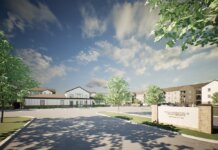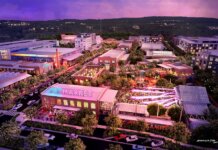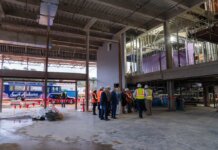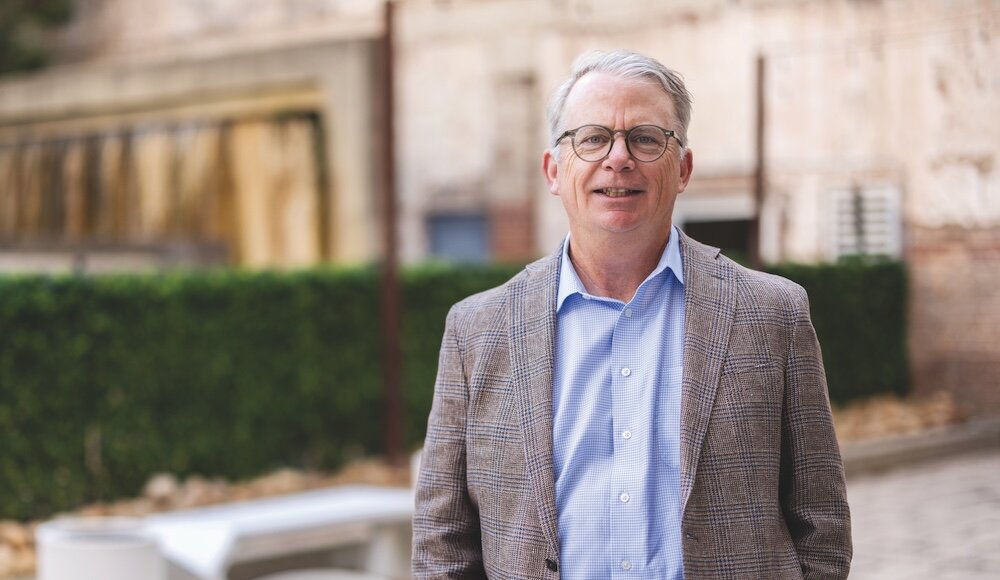
With more than 50 architectural firms in Birmingham alone, it can be hard to stand out.
Over the last 20 years, Poole & Co. Architecture and Interior Design has built an impressive clientele and solid reputation through creativity, versatility and word of mouth. The practice’s portfolio ranges from fun restaurant spaces to medical offices, condos and even a homeless shelter.
President and owner John Poole graduated from Auburn University in 1986. He interned with a Birmingham firm and worked there for almost 20 years before starting his own company in February 2005.
“I just felt like there was so much more that I could offer if I started my own practice, so I just jumped out and gave it a shot,” Poole says.
His first hire was his current partner, Auburn graduate Kelly Mullins, in 2006. The company now has a staff of 25.
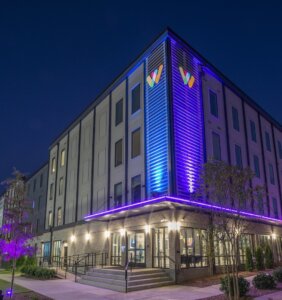
“Birmingham is kind of a small big town, so to speak,” says Poole. “After being in the business and in this community for 20 years, you form a lot of relationships, and this is definitely a relationship business.”
He stayed in touch with civil, structural and mechanical engineers he interacted with at his first job. “They opened some doors for me just to kind of get my start,” he says.
Syracuse University graduate Kyle D’Agostino became a partner at Poole in 2018. He also shares his knowledge as an adjunct professor at Auburn University.
The company has divisions in health care, multi-family spaces, restaurant and hospitality design, adaptive re-use of old buildings, as well as public and nonprofit buildings and offices.
They do work throughout Alabama, Poole says.
Significant projects include several for Children’s Hospital of Alabama in Birmingham, including the inpatient behavioral health unit, NICU expansion and imaging area.
“We do quite a bit of health care work,” Poole says. “We’re working for five or six local hospital systems here in Birmingham and we’re beginning to make connections with some other hospital systems outside of Birmingham and outside of Alabama.”
With a children’s hospital project, it’s very important “that the space is a distraction from why they’re there,” Poole says.
“Children’s has been a wonderful client because they really embrace that,” he says. “And so, we have had the opportunity to be very creative with all of those projects. And I think the interiors and the exteriors of the Children’s buildings and campus reflect that.”
The Poole firm also does a fair amount of government projects.
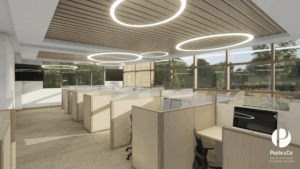
“We’ve done a lot of work for Jefferson County over the years and for several state agencies,” Poole says, including the Jefferson County Building 2121 renovation.
He’s particularly proud of the Jefferson County Coroner and Medical Examiner’s Office that opened in Birmingham earlier this year. Located on a wooded, 9-acre site, the project is designed with natural light and a covered employee patio to marry function with “staff well-being.”
The Birmingham Firehouse Shelter men’s homeless shelter is a project close to Poole’s heart.
“It really presented some interesting challenges to create a place where homeless men can live in dignity and create a building that provides protection for them and from the neighbors,” he says.
Restaurant design gives architects a little more artistic leeway. D’Agostino is particularly passionate about food, Poole says.
“He’s sort of a chef himself and he’s kind of introduced us to that work,” Poole says. “There is a lot of opportunity to be creative and have fun with it. A lot of our younger people enjoy that as well.”
Noteworthy restaurant designs include Paramount, El Barrio and Bar La Fete in downtown Birmingham and Key Circle Commons bar in Mountain Brook. They’re currently working on a restaurant in Huntsville for Brick and Tin.
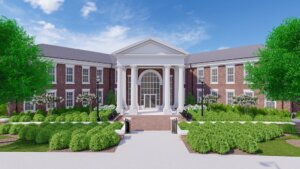
The Poole company’s work is concentrated in Birmingham, but they also have done projects in Tuscaloosa, Huntsville and other Alabama locations.
Their multifamily housing division designed Champion’s Place, a Tuscaloosa condominium created with University of Alabama sports fans in mind. Condos overlook the football practice facility and track.
“You could sit on your balcony and if you’re lucky, catch football practice and then you can walk downstairs and you’re within four or five blocks of the stadium,” he says.
It’s a good example of style driving purpose, he notes.
“The architecture of those buildings is inspired by the architecture on the campus of the University of Alabama, which is why people are there.”
Poole has heard the saying that architecture is a field where knowledge is a mile wide and an inch deep.
“You have to know enough about a lot of different things to be a good architect,” he says.
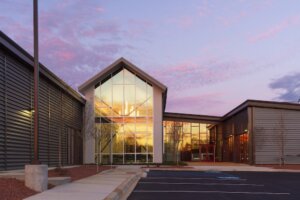
In hiring, he looks for well-rounded people.
“You need to understand how to take a project from a blank sheet of paper to completion,” says Poole.
That includes “understanding how to translate what our clients are telling us about their project into a space program, and then into a design concept and then into a building and follow that all the way through construction to see that idea completed in its physical form.”
Consulting engineers create structural systems, and construction companies do the building.
“We sort of play the role as conductor of the orchestra where we have to bring all of these disciplines together and knit all those materials and ideas and systems together to make a building,” Poole says.
“It takes time. That’s why it’s called a practice — a practice of architecture. It takes years to put all that together.”
The company slogan is “passion fueled by purpose.”
Each project begins with a “problem statement” that covers goals, expected outcomes, space requirements and other details. That helps create “a very clear path for everyone in the company to follow to kind of achieve the finished product.”
Adaptability in this iterative process is important, Poole says.
“I think most every architect comes out of school just ready to set the world on fire with creative design ideas and creative buildings,” he says. “Then you just realize that you’ve got to sort of direct your creativity to the problem at hand. And sometimes that problem is not always a cool modern aesthetic.”
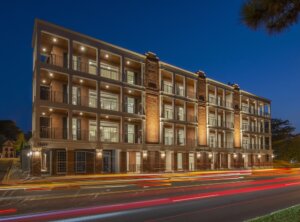
In a general sense, building styles come and go based on trends.
“I think for me, and for us, we’re less concerned about style and less concerned about imposing maybe what our aesthetic ideas are than we are interested in a building that is going to be timeless in its functionality,” Poole says.
Following decades of sometimes unfortunate urban renewal, restoration of old buildings is growing in popularity, he agrees. Birmingham, in particular, lost an ornate circa-1909 train station in 1969.
“I think everybody looks back at that as just a disastrous move,” he says.
Poole says they are considering opening an office in the Florida Panhandle. “We’re starting to do a little bit of health care work in Florida, and I just feel like there’s a lot of potential,” he says.
With two decades behind them, Poole believes the company’s growth potential is “tremendous.”
“We’re excited about being a part of the legacy of Birmingham and the places that we work. And I think we’ve got a great staff and have built a really, really, attractive culture to bring good people to us.”
Deborah Storey and Cary Norton are freelance contributors to Business Alabama. Storey is based in Huntsville and Norton in Birmingham.
This article appears in the September 2025 issue of Business Alabama.

